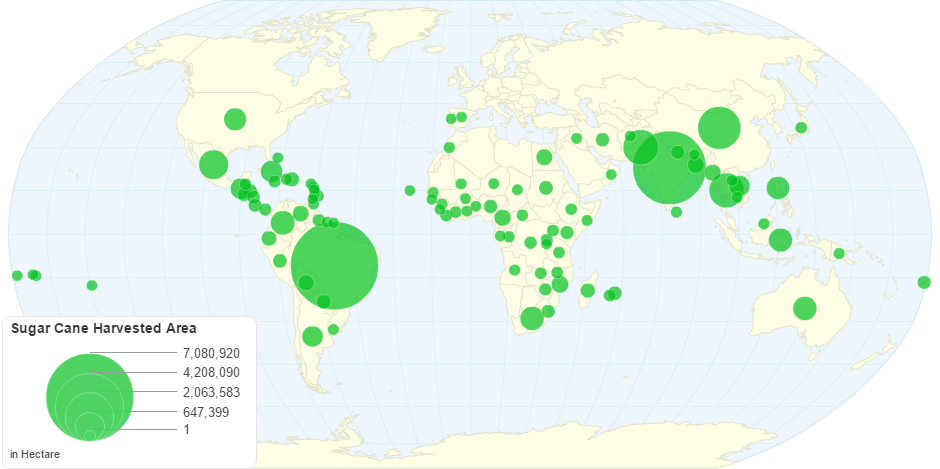This chart shows Sugar Cane Harvested Area by Country.
Sugarcane, or sugar cane, are several species of tall perennial true grasses of the genus Saccharum, tribe Andropogoneae, native to the warm temperate to tropical regions of South Asia and Melanesia, and used for sugar production. It has stout, jointed, fibrous stalks that are rich in the sugar sucrose, which accumulates in the stalk internodes.
The plant is 2 to 6 m tall. All sugar cane species interbreed and the major commercial cultivars are complex hybrids. Sugarcane belongs to the grass family Poaceae, an economically important seed plant family that includes maize, wheat, rice, and sorghum, and many forage crops. The world demand for sugar is the primary driver of sugarcane agriculture. Cane accounts for 80% of sugar produced; most of the rest is made from sugar beets.
Sugarcane predominantly grows in the tropical and subtropical regions. Other than sugar, products derived from sugarcane include falernum, molasses, rum, cachaça, bagasse, and ethanol. In some regions, people use sugarcane reeds to make pens, mats, screens, and thatch. The young, unexpanded inflorescence of tebu telor is eaten raw, steamed, or toasted, and prepared in various ways in certain island communities of Indonesia.
Sugarcane is cultivated in the tropics and subtropics in areas with a plentiful supply of water, for a continuous period of more than 6-7 months each year, either from natural rainfall or through irrigation. The crop does not tolerate severe frosts. Therefore, most of the world's sugarcane is grown between 22°N and 22°S, and some up to 33°N and 33°S.
Sugarcane can be grown on many soils ranging from highly fertile well-drained mollisols, through heavy cracking vertisols, infertile acid oxisols, peaty histosols, to rocky andisols. Both plentiful sunshine and water supplies increase cane production.
9 years ago

